Bad Habits
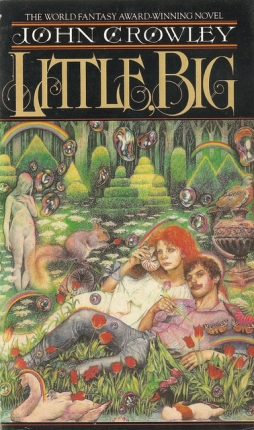 I’ve been thinking a fair bit lately about how I read what I read, and how I enjoy it. Or, what’s in it that I enjoy. It seems to me that much of the pleasure in my reading comes about from bad habits. Which is to say, habits that I can’t help but think ought to be bad, but which nevertheless feel central to the act of reading. Maybe that feeling’s an illusion; maybe it’s the secret why bad habits become habits. At any rate, I thought I’d be self-indulgent this week and throw out what I’ve come up with, as I’d love to hear if any of it resonates with anyone else’s experience of reading.
I’ve been thinking a fair bit lately about how I read what I read, and how I enjoy it. Or, what’s in it that I enjoy. It seems to me that much of the pleasure in my reading comes about from bad habits. Which is to say, habits that I can’t help but think ought to be bad, but which nevertheless feel central to the act of reading. Maybe that feeling’s an illusion; maybe it’s the secret why bad habits become habits. At any rate, I thought I’d be self-indulgent this week and throw out what I’ve come up with, as I’d love to hear if any of it resonates with anyone else’s experience of reading.
My first bad habit is a tendency to make a preliminary judgement about a book after only a page or two. Maybe even less. That’s a judgement that can, and often does, change as I read on. But it still feels like I’m having a response — equal parts emotional, imaginative, and rational — based on incomplete information. Of course one has the right to a first impression, and of course it’s worth keeping an eye on whether the book you’re reading is repaying the time you put into it. But the reaction I have is something broader than that; it’s a kind of synecdochic sense of the book that derives from reading a small part of it. And it can be not just misleading, but horribly misguided.
A book like The Lord of the Rings grows as it goes on; it grew as it was written, and its shape as a story tends to reflect the way its characters go on journeys to unexpected places. A book like Little, Big (which I think is the best post-Tolkien novel of the fantastic I’ve read) keeps building thematically and narratively as it goes on, and makes that act of building into a structural principle of the novel: the fact that the story gets bigger the further in you go relates directly to one of the major themes of the book. So in both cases, you can’t really judge the book from the opening pages, and in both cases it may be a while before you really get a sense of what’s going on. In both cases that distance, that development, how the registers change over the course of the story, is key to the whole experience.
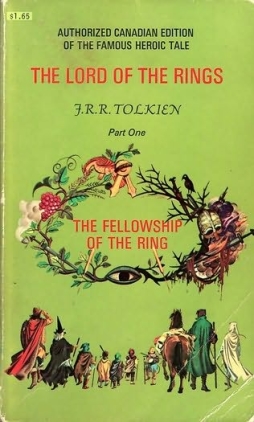 So a book sets up expectations, and then plays with them. Still, it seems to me that looking back from the end of a book, there’s usually a sense of a continuity of experience to the whole thing. As though however much it changed, the complete work was in some way implicit in its beginning. You could say that the beginning was the seed from which the rest grew, or you could say that there was a holographic quality, the whole thing contained in a fragment. But how’s that possible? Surely this is mere justification for a bad habit?
So a book sets up expectations, and then plays with them. Still, it seems to me that looking back from the end of a book, there’s usually a sense of a continuity of experience to the whole thing. As though however much it changed, the complete work was in some way implicit in its beginning. You could say that the beginning was the seed from which the rest grew, or you could say that there was a holographic quality, the whole thing contained in a fragment. But how’s that possible? Surely this is mere justification for a bad habit?
Maybe. Except one usually thinks of a story, or a book insofar as one talks about a book as a whole, as a unity. Which means something binds it all together. Something provides a continuity. Is it possible to intuit that unity from a tiny proportion of the whole text? What is it I’m reacting to, in those pages, anyway? Presumably, if I’m talking about a fragment — not enough to represent plot or character in the way those things are depicted throughout the whole of the work — then I’m reacting to language. To style.
Let me pause this discussion here (I’ll get back to it) to note another bad habit this brings up: I’m really a very shallow reader.
More and more, the books that appeal to me seem to simply be books that do interesting things with language. Which feels terribly superficial. I know I used to read for plot; to find out what happens next. And I was reading to follow characters, and find out what happened to them, and how they’d develop and grow. So I was reading to see structures — plot developments — that I hadn’t seen before.
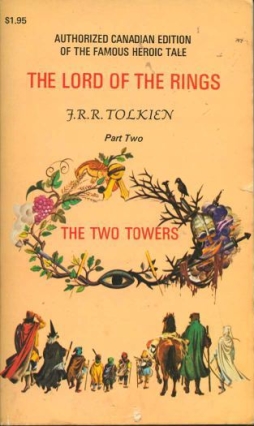 I have an uncomfortable feeling that when I read like that, I was reading at a deeper level than I am now. I was reading for the essence of the story. Now I’m just reading for the words. Sure, I like to think that means that I’m reading more attentively, and letting the events of the narrative build in my head based on what’s actually written rather than on what I’m projecting into the story. But doesn’t it also mean that my attention’s less on the heart of the work than it is on the surface?
I have an uncomfortable feeling that when I read like that, I was reading at a deeper level than I am now. I was reading for the essence of the story. Now I’m just reading for the words. Sure, I like to think that means that I’m reading more attentively, and letting the events of the narrative build in my head based on what’s actually written rather than on what I’m projecting into the story. But doesn’t it also mean that my attention’s less on the heart of the work than it is on the surface?
And, if I’m letting the story build itself in my head, if I’m trying not to make assumptions — isn’t that a particularly passive way to read? Am I not shirking from a full-fledged involvement with the text before me? There’s a fairly widespread phenomenon among readers of returning to books (or comics) we read when we were children and finding them smaller; the emotional power lessened, long passages that moved us reduced to a sentence or two. We find we were remembering our involvement with the text, not the text itself. If I’m dealing more and more with the mere words on the page, am I not taking part in that diminishment? Am I not acceding, in the name of critical scrutiny, to a dwindling of a reader’s proper joy and passion? And am I being fair to the text before me, when another reader might bring to it more willingness to interact with it and fill out what it chooses merely to imply?
If so, then that’s a third bad habit: passivity. Any text can only be a network of implications. A reader has to supply some of their own interpretations, their own imaginative understanding of what they’re reading. When you read “a chair,” or even “a wooden chair,” or for that matter “a battered old wooden armchair with a set of claw-marks scored deeply into one arm and a pattern of curious stains on the back as though it had been marked by an unknown acid” — you’re still bulking out that description with some more detailed sense in your own mind of what that chair looks like. How can you read a text properly if you refrain from doing that?
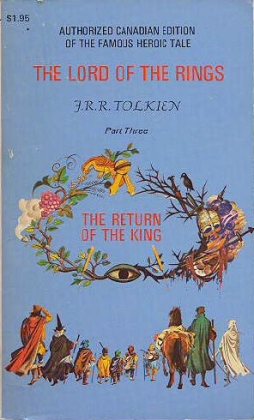 On the other hand, if it’s a bad habit, it’s a habit a lot of fantasy and science fiction encourages. Mimetic texts assume a world that we know; that action of bulking-out a text with our own visioning is expected to be based in some shared reality. That’s not true in fantastika. You can read a text, imagining that you understand what’s going on, then find some small detail that throws everything into question. A made-up culture might have details of meaning in its dress or behaviour that only reveals itself gradually. And in both mimetic and fantastic literature, some stories live in the blind spots we hardly know are there — appearing on the surface to be one thing, but revealing another shape if you look closely at what you thought was true but which was, in fact, only assumed at first reading. So there is in that sense an encouragement when reading fantasy to take nothing for granted; to make no unnecessary assumptions.
On the other hand, if it’s a bad habit, it’s a habit a lot of fantasy and science fiction encourages. Mimetic texts assume a world that we know; that action of bulking-out a text with our own visioning is expected to be based in some shared reality. That’s not true in fantastika. You can read a text, imagining that you understand what’s going on, then find some small detail that throws everything into question. A made-up culture might have details of meaning in its dress or behaviour that only reveals itself gradually. And in both mimetic and fantastic literature, some stories live in the blind spots we hardly know are there — appearing on the surface to be one thing, but revealing another shape if you look closely at what you thought was true but which was, in fact, only assumed at first reading. So there is in that sense an encouragement when reading fantasy to take nothing for granted; to make no unnecessary assumptions.
But what’s unnecessary? Some assumptions are inevitable. And even stories that undermine assumptions rely on them being made in the first place. I suspect that my third bad habit is therefore a phantasm. Part of reading, part of being told a story, is drawing what you’ve been told together into a single whole; and part of that must involve making assumptions, whether you know it or not.
At an extreme, a reader might consciously or unconsciously make up bits of story for themselves to explain away apparent incongruities in the larger story. There’s an argument about Citizen Kane that says that the opening scene doesn’t work with the rest of the movie. The film begins with the camera closing in on a mansion at the centre of a huge estate; a light goes out in an upper window; we move into the room, and see a man lying sick in a bed; we close in on his lips as he dies, saying the word “rosebud”; a snow-globe falls from his hand to crash on the floor; we see a nurse rush into the room. The rest of the movie is an attempt to find out what the enigmatic word “rosebud” refers to. Well, the argument goes, if the nurse had left the room — presumably she was the person who turned out the light as the camera approached — how did anybody know that the dying man said “rosebud”?
 The counter-argument: it doesn’t matter. You can assume there was an open telephone line from the room to the nurse’s station. Or he’s been delirious for hours or days beforehand, muttering “rosebud” over and over. Or that he whispered it again in a final breath without us hearing it as the nurse tended to him. Or just that there was another person in the room, which the set-up of the shot leaves as a possibility (a crooked butler later describes the scene to a reporter; he might have been lying, but he might actually have been present). It’s up to you, as the audience, how you assume that the word was heard, if you think it’s important. The point is that the word was heard, and the story goes on from there. We assume that bit of story, and give it whatever shape we choose, if we happen to think of it.
The counter-argument: it doesn’t matter. You can assume there was an open telephone line from the room to the nurse’s station. Or he’s been delirious for hours or days beforehand, muttering “rosebud” over and over. Or that he whispered it again in a final breath without us hearing it as the nurse tended to him. Or just that there was another person in the room, which the set-up of the shot leaves as a possibility (a crooked butler later describes the scene to a reporter; he might have been lying, but he might actually have been present). It’s up to you, as the audience, how you assume that the word was heard, if you think it’s important. The point is that the word was heard, and the story goes on from there. We assume that bit of story, and give it whatever shape we choose, if we happen to think of it.
But how far will the audience go along with a story? It works for Kane, but Kane’s a brilliant movie. It earns the audience’s complicity. But that returns me to my first bad habit: what if that gap in the logic of the opening had knocked me out of the movie when I first saw it? What if I get a bad first impression of a good or great book because I as a reader am insufficiently generous? Sure, you could argue that the visual and storytelling style of Kane will pull me through — that second bad habit in action, the tendency to superficiality — but then wouldn’t that mean that I was reacting purely to the visual style, and not appreciating the film on the level it deserves to be appreciated?
Let me step back a bit. These bad habits of mine seem to deal with style. So let’s go back to that. Let’s talk about what I mean by ‘style’, and see if that resolves anything.
The way I think of it, style, or diction, or the language of the work, refers to the characteristic way the work has of transmitting information. In the case of a story, that information is in the shape of a narrative (or: is indistinguishable from narrative, as you like). Style is both the material for the construction of the work, and a lens through which something is seen. A lot of commercial fiction tends to have a simple style, that depicts events relatively unambiguously, except where the plot calls for ambiguity. If style’s a lens, these styles are clear and untinted. Other styles can present simple things in complex ways, through lenses that distort and so create or present some kind of distinct vision; Ulysses is a kaleidoscope. But do you look through a kaleidoscope or at it? The style there, I feel, becomes clearly the thing that builds the work.
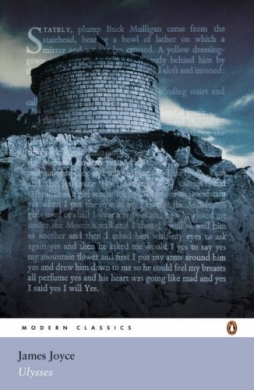 One might say that style is a presentation of information and that the presentation is itself a part of that information, using the widest definition of ‘information’ possible — information being aesthetic as well as literal. Or that the manipulation of the presentation of information in phrases is itself a kind of stylistic information; a given stylistic approach will literally inform a work. So you could also talk about style as the manipulation of the disjunctions between bits of information. A phrase contains a piece of information; a sentence may be one phrase, or multiple phrases tied together by various grammatical devices. But the period defines the sentence. It (or question mark, or exclamation point) marks an end to one bit of information or set of linked bits of information. So between sentences there’s a gap. In that way a sentence is like a panel in comics, or like a shot in film. You could say that storytelling style comes from the way the individual units of meaning are put in sequence, or flip it around and say the style comes from manipulating the spaces between sentences, panels, or shots. Usually you want the audience to move smoothly from one unit of meaning to the next, without even noticing what they’re doing or the assumptions they’re being led to make. But sometimes you want to shock them with something abrupt or unexpected. And sometimes you’ve got a style that challenges them to tie together the fragments of meaning that is, in the end, all they’ve actually got before them.
One might say that style is a presentation of information and that the presentation is itself a part of that information, using the widest definition of ‘information’ possible — information being aesthetic as well as literal. Or that the manipulation of the presentation of information in phrases is itself a kind of stylistic information; a given stylistic approach will literally inform a work. So you could also talk about style as the manipulation of the disjunctions between bits of information. A phrase contains a piece of information; a sentence may be one phrase, or multiple phrases tied together by various grammatical devices. But the period defines the sentence. It (or question mark, or exclamation point) marks an end to one bit of information or set of linked bits of information. So between sentences there’s a gap. In that way a sentence is like a panel in comics, or like a shot in film. You could say that storytelling style comes from the way the individual units of meaning are put in sequence, or flip it around and say the style comes from manipulating the spaces between sentences, panels, or shots. Usually you want the audience to move smoothly from one unit of meaning to the next, without even noticing what they’re doing or the assumptions they’re being led to make. But sometimes you want to shock them with something abrupt or unexpected. And sometimes you’ve got a style that challenges them to tie together the fragments of meaning that is, in the end, all they’ve actually got before them.
Which is to say, or to repeat, that the readers ultimately construct the text in their own minds. Both style and structure are interpretations by the readers of the text before them. The writer can guide them, and I suspect that a writer’s approach to style may, however subtly, however unconsciously on the part of either or both of writer and reader, affect the way they perceive structure. So that’s my only justification for my second bad habit: that the style and the story are the same thing.
I seem to see a lot of writing about writing concern itself with structure, in one way or another. I do it myself — in talking about what makes a story work or not work, structure is something I often reflect on. But structure, story shape, is created in the head of the reader. Things that may strike one reader as misshapen will strike another as perfectly formed. The second reader might have made some connection the first didn’t, perceiving the structure differently. Or, the second reader might have a different sense of what structure is than the first; might have different ideas of symmetry, or of what can be left to be implied, or of what amount of detail is compelling, or of how fast a story must flow. A particularly generous reader might even allow a story to teach them a new perception of story, and so come to accept that a story shape they hadn’t previously believed to be workable is in fact highly successful. You could probably say that any successful story is in fact a successful argument for its chosen shape. But that the argument comes before the perception of the shape. If a reader likes a text, they’ll find a justification for its shape.
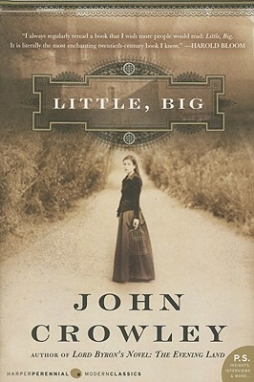 Which returns me to my first bad habit. I can’t get away from the idea that language is a meter of whatever else is going on in a book. Even in fairly small quantities. Is this wrong? Or, if a work is built out of the presentation of small pieces of information, and out of the manipulation of the gaps between those pieces of information, is a page or two enough to get a sense of how the presentation and the manipulation work?
Which returns me to my first bad habit. I can’t get away from the idea that language is a meter of whatever else is going on in a book. Even in fairly small quantities. Is this wrong? Or, if a work is built out of the presentation of small pieces of information, and out of the manipulation of the gaps between those pieces of information, is a page or two enough to get a sense of how the presentation and the manipulation work?
Is this the holographic sense? The way that style presents information is reflective of how the work as a whole unfolds? Is the structure of sentence and paragraph reflective of the overall unity of the work? Even in a couple of pages, the writer’s made chocies about what pieces of information to provide; what is important, or should appear to be important. Is that enough to get a meaningful sense of a novel-length work?
No, of course not. But it’s enough to create the impression of a meaningful sense of the work. And I think if I’m honest, that it’s an impression that’s subtly altered over the course of reading the whole book, so that the sense I have at the end of a book is in fact quite different than the one I had at the beginning — it’s just that sometimes the difference is obvious, while sometimes the process of alteration disguises itself, unfolds so naturally out of the original impression, it seems like it was always ever one and the same. In which case, the first bad habit I’m worried about dissolves, a misconception from the start.
Have I argued away the badness of my reading habits, or are these self-justifying delusions? Maybe it doesn’t make a difference. Readers can approach a text any way they like. That’s one of their absolute rights as a reader. It may only be my neuroses that leads me to worry about my approach, and to always seek another, better, way to apprehend what it is that’s before me. It’s clear to me that the way I read books has changed over time. I’d like to think it grows more flexible, if not more sophisticated. But who knows? I have my habits, good or bad. A few years from now, maybe I’ll have outgrown them. But in the meanwhile, maybe I can use them to teach myself something about whatever it is that I do when I read.
Matthew David Surridge is the author of “The Word of Azrael,” from Black Gate 14. His ongoing web serial is The Fell Gard Codices. You can find him on facebook, or follow his Twitter account, Fell_Gard.
As no-one can enter the same river twice (for the second time it’s not the same river… and not the same person), no-one can read the same book twice. The second time you read knowing all that follows. Foreshadowings and parallels stand out clearer. All the little hints and clues, ah, there was fair warning after all. (Or perhaps there was misleading?) The stage lights are a little brighter; right away you notice the pistol hung on the wall and the eyes in the painted portrait. The household servants, postman, and patrolman are no longer such “background” characters. Even the narrator may have changed….
[…] Bad Habits […]
[…] have Black Gate to thank for introducing me to Little, Big. First there was “Bad Habits,” a posting from Matthew David Surridge, and then came John O’Neill’s posting of Locus […]